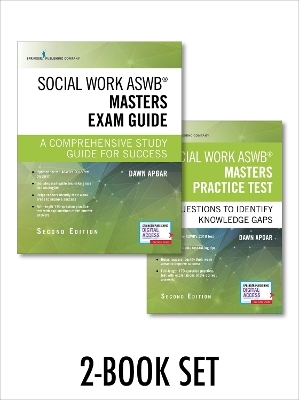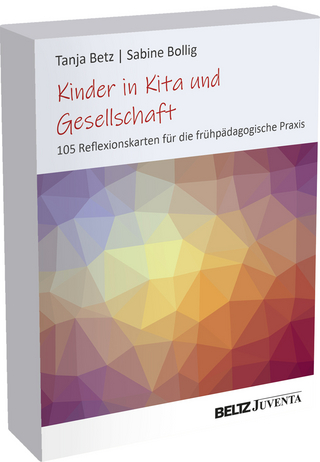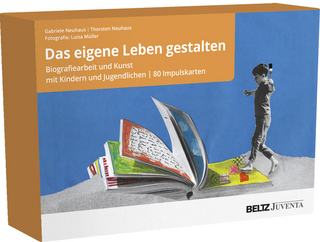
Social Work ASWB Masters Exam Guide and Practice Test Set
Springer Publishing Co Inc
978-0-8261-4784-4 (ISBN)
- Titel erscheint in neuer Auflage
- Artikel merken
Note to readers: Publisher does not guarantee quality or access to any included digital components if the book is purchased through a third-party seller.This set includes 335 questions, available in book and via premium app.
Updated to reflect ASWB's revised 2018 test blueprint used for test construction.
Now with a free mobile & web app with print purchase!
If you're studying for the ASWB exam, this comprehensive study guide and practice test package is a must have. Written by a renowned social work educator rather than an unknown at a test preparation company, this thoroughly updated Exam Guide helps readers identify their weak areas so they know what to focus on to pass the ASWB Masters licensure exam! Reviewers applaud the book's unique test-taking tips and strategies, which are based on the author's extensive knowledge of the exam. A thorough review of the four content areas of the updated Masters exam is provided. The 170-question practice test in the Exam Guide, with explanations of the correct answers, mirrors the actual exam in length and structure. This invaluable guide has been praised by social workers across the country as essential to passing the ASWB Masters Exam on the first attempt! The bonus Practice Test has an additional 170-questions!
EXAM GUIDE BOOK HIGHLIGHTS INCLUDE:
Updated to reflect ASWB's revised 2018 test blueprint used for test construction.
Content available via an app in addition to the print version so test takers can study using multiple mediums.
Written by a renowned social work educator who has helped thousands of test takers pass the exam through her invaluable workshops.
Provides a thorough content review of the four core areas of the updated Masters examination: human development, diversity, and behavior in the environment; assessment and intervention planning; interventions with clients/client systems; and professional relationships, values and ethics.
Readers applaud the invaluable tips for how to read the questions, overcome test anxiety, avoid common pitfalls, and assess one's learning style, all of which help foster exam confidence.
Begins with a self-assessment to help identify areas of strength and weakness.
A full practice test with 170 questions that mirrors the actual ASWB Masters exam in length, structure, and content, with detailed explanations of the correct answers.
Identifies the Knowledge, Skills, and Abilities statements (KSAs) for each question so test-takers can easily locate relevant source materials for further study.
PRACTICE TEST BOOK HIGHLIGHTS INCLUDE:
Test-taking strategies for each question along with the detailed rationale for the correct answer help readers identify gaps in knowledge and errors in problem solving.
Questions are distinct from those in the author's second edition Social Work ASWB Masters Exam Guide, included in this package
Students applaud the invaluable tips for how to read and answer each question and assess one's learning style which provide a powerful diagnostic tool and help foster exam confidence.
The Knowledge, Skills, and Abilities statements (KSAs) are identified for each question so test takers can easily locate relevant source materials for further study.
An evaluation of results helps readers identify the content areas and competencies that need further study.
App included!
Includes all the high-quality content from both books!
Information at your fingertips anytime, anywhere.
Available on iOS, Android, and the web, with a powerful, simple-to-use interface.
335 board-style questions and answers.
PREMIUM APP ACCESS INCLUDED WITH PRINT PURCHASE
Dawn Apgar, PhD, LSW, ACSW, has helped thousands of social workers across the country pass the ASWB examinations associated with all levels of licensure. In recent years, she has consulted in numerous states to assist with establishing licensure test preparation programs.Dr. Apgar has done research on licensure funded by the American Foundation for Research and Consumer Education in Social Work Regulation and was chairperson of her state's social work licensing board. She is a past President of the New Jersey Chapter of NASW and has been on its National Board of Directors. In 2014, the Chapter presented her with a Lifetime Achievement Award. Dr. Apgar has taught in both undergraduate and graduate social work programs and has extensive direct practice, policy, and management experience in the social work field.
Preface
Acknowledgments
Share Social Work ASWB® Bachelors Exam Guide: A Comprehensive Study Guide for Success
Introduction
About the Examination
10 Things That You Should Know About the ASWB Examinations
Test-Taking Strategies
10 Essential Strategies for Study Success
20 Tips You Need to Use to Answer Questions Correctly
Assessing Examination Difficulties
Dealing With Test Anxiety
Examination Content
Visual Learners
Auditory Learners
Kinesthetic or Hands-On Learners
Self-Assessment
Unit I: Human Development, Diversity, and Behavior in the Environment (27%)
1. Models of Human Growth and Development
Typical and Atypical Physical Growth and Development
Typical and Atypical Cognitive Growth
Typical and Atypical Social Growth and Development
Typical and Atypical Emotional Growth and Development
Typical and Atypical Sexual Growth and Development
Spiritual Growth and Development
Child Behavior and Development
Adolescent Behavior and Development
Young Adult Behavior and Development
Middle Adult Behavior and Development
Older Adult Behavior and Development
The Impact of Physical, Mental, and Cognitive Impairment on Human Development
The Interplay of Biological, Psychological, Social, and Spiritual Factors
Attachment and Bonding
Basic Human Needs
2. Models of Human Behavior in the Social Environment
Strengths-Based and Resilience Theories
Defense Mechanisms and Human Behavior
The Psychosocial Model
Group Theories
Key Concepts
Family Theories and Dynamics
Systems and Ecological Perspectives
Social Change and Community Development Theories
Influence of Social Context on Behavior
Role Theories
Gender Roles
3. Diversity
The Interaction of Culture, Race, and/or Ethnicity with Behaviors, Attitudes, and Identity
White American
American Indian/Alaska Native
Asian
African American
Native Hawaiian and Other Pacific Islander
Hispanic/Latino
The Interaction of Sexual Orientation and/or Gender with Behaviors, Attitudes, and Identity
The Interaction of Age and/or Disability with Behaviors, Attitudes, and Identity
The Interaction of Socioeconomic Status with Behaviors, Attitudes, and Identity
The Interaction of Spirituality and Religion with Behaviors, Attitudes, and Identity
The Dynamics and Effects of Stereotypes and Discrimination
The Relationship of Diversity and Communication Styles
4. Effects of the Environment on Client System Behavior
The Impact of the Physical Environment on Client Systems
The Impact of the Political Environment on Policy-Making and Client Systems
The Impact of the Social Environment on Client Systems
The Impact of the Cultural Environment on Client Systems
Unit II: Assessment (28%)
5. Social History and Collateral Data
Obtaining a Biological, Psychological, Social, and Spiritual History
Obtaining and Evaluating Collateral Information
Types of Information Available From Employment, Medical, Psychological, Psychiatric, and Educational Records
The Components of a Sexual History
The Components of a Family History
6. Problem Identification
The Process Used in Problem Formulation
The Methods of Involving the Client System in Identifying the Problem
The Process of Identifying the Client System Needs
The Process of Referring the Client for Additional Evaluations (e.g., Medical, Psychological, Educational)
7. Assessment of Client System’s Strengths and Challenges
Use of Assessment Instruments in Practice
Beck Depression Inventory
The Minnesota Multiphasic Personality Inventory
Myers–Briggs Type Indicator
Rorschach Inkblot Test
Stanford–Binet Intelligence Scale
Thematic Apperception Test
Wechsler Intelligence Scale
Assessing the Client System’s Communication Skills
Assessing the Client System’s Strengths, Resources, and Challenges
Assessing the Client System’s Ability and Motivation to Engage in the Intervention Process
Assessing the Client System’s Coping Abilities
Assessing the Client’s Needed Level of Care (e.g., Supportive Services, Residential Placement, Continuum of Care)
Assessing Group Functioning
Assessing Community Functioning
Assessing Functioning of Organizations
8. Assessment of Addictive Behaviors
Differentiating the Use of, Abuse of, and Dependency on Substances
Effects of Addiction on the Client
Effects of Addiction on the Family System and Other Relationships
Indicators of Addiction to Gambling, Sex, Food, Media, and so on
Co-Occurrence of Addiction and Other Disorders
9. Assessment of Mental and Behavioral Disorders
The Symptoms of Mental and Emotional Illness Across the Life Span
The Symptoms of Neurologic and Organic Conditions
Some Common Neurologic Symptoms
The Indicators of Behavioral Dysfunction
Prescription Medications and Other Substances
10. Dynamics and Indicators of Abuse and Neglect
The Indicators, Dynamics, and Impact of Sexual Abuse Across the Life Span
The Indicators, Dynamics, and Impact of Emotional Abuse and Neglect Across the Life Span
The Indicators, Dynamics, and Impact of Physical Abuse and Neglect Across the Life Span
The Indicators, Dynamics, and Impact of Intimate Partner Violence
The Indicators, Dynamics, and Impact of Other Forms of Exploitation Across the Life Span (E.g., Financial, Immigration Status, Sexual Trafficking)
Unit III : Direct and Indirect Practice (26%)
11. Indicators and Effects of Crisis and Change
The Dynamics and Effects of Life-Stage and Life-Cycle Crises
The Impact of Physical and Mental Illness
Dynamics and Effects of Trauma
Dynamics and Effects of Loss, Separation, and Grief
The Impact of Caregiving on Families
Caregiving for Aging Parents
Indicators of and Response to Client Danger to Self and Others
Stages of Crises
12. Intervention Processes and Techniques
Building and Maintaining a Helping Relationship
Components of the Problem-Solving Process
Developing, Evaluating and Establishing a Measurable Intervention Plan
The Techniques Used to Engage and Motivate Client Systems
Working with Involuntary Client Systems
Contracting with Client Systems
Clarifying the Roles and Responsibilities of the Client System
Termination and Follow-up in Social Work Practice
The Crisis Intervention Approach
Cognitive and/or Behavioral Interventions
Cognitive Interventions
Behavioral Interventions
Strengths-Based and Empowerment Practice
Techniques Used to Teach Skills to Client Systems (e.g., Role-Playing, Role-Modeling)
Role-Playing
Role-Modeling
Providing Education and Information to Client Systems (e.g., Parenting, Psychosocial Aspects of Health and Illness)
Teaching Coping Strategies to Client Systems (e.g., Assertiveness, Conflict Resolution, Stress Management)
Assertiveness Training
Conflict Resolution
Stress Management
Anger Management
Group Work Approaches
Family Practice Approaches
Community Practice Approaches
Social Policy Development and Analysis
Key Social Welfare Legislation
Advocating for Micro, Mezzo, and Macro Client Systems
Micro
Mezzo
Macro
Intervening with Organizations (e.g., Organizational Policy Development, Hierarchy, Formal and Informal Power Structures)
Classical Organizational Theories
Neoclassical Theories
Modern Organizational Approaches
13. Matching Intervention With Client System Needs
Determining Which Individual, Family, Group, or Combined Modality Meets the Needs of Client Systems
Determining Which Community or Organizational Approach Meets the Needs of Client Systems
The Effect of the Client System’s Abilities on the Selection of an Intervention (e.g., Literacy, Employability, Developmental Level, Cognitive Ability, Physical Ability)
The Effect of the Client System’s Culture on the Selection of an Intervention
The Effect of the Client System’s Life Stage on the Selection of an Intervention
Providing Case Management Services
Referring Client Systems for Services
Determining the Client’s Eligibility for Services
14. Use of Collaborative Relationships
Scope of Practice and Basic Terminology of Professions Other Than Social Work
Medical Terminology
The Use of Consultation and Case Conferences
Interdisciplinary and Intradisciplinary Team Approaches
Establishing, Maintaining, and Utilizing Formal and Informal Service Networks or Community Resources and Supports
15. Documentation
The Use of Objective and Subjective Data in Written Assessments and Case Notes
Writing and Maintaining Client Records (e.g., Client Progress Notes)
Developing Reports for External Organizations (e.g., the Courts)
Developing Administrative Reports (e.g., Grant Reports, Outcomes and Evaluations, Program Proposals, Accreditation Reports)
Recording and Monitoring Assessments and Service Plans
Obtaining and Recording Service-Related Forms (e.g., Informed Consent for Services, Consent for Release of Information, Advance Directives, Do Not Resuscitate)
16. Interviewing
Obtaining Information Relevant to a Given Situation
The Use of Verbal and Nonverbal Communication Techniques
Identifying the Underlying Meaning of Communication
The Use of Active Listening and Observation
Interviewing Techniques (e.g., Supporting, Clarifying, Confronting, Validating, Feedback, Reflecting)
Eliciting Sensitive Information (e.g., Substance Abuse, Sexual Abuse)
Interviewing Clients with Communication Barriers (e.g., Language Differences, Use of Interpreters)
Using Bias-Free Language in Interviewing
Responding to Clients’ Resistant Behaviors
17. Evidence-Based Practice
Evaluation of One’s Own Practice (e.g., Single-Subject Designs, Goal-Attainment Scaling, Task-Achievement Scaling, Use of Scales and Instruments)
Single-Subject Designs
Goal-Attainment and Task-Achievement Scaling
Use of Scales and Instruments
Critiquing Relevant Research and Statistical Data (e.g., Understanding Basic Research Designs and Methods)
Selecting Interventions Based on Research
Using Data to Inform and Influence Organizational and Social Policy
The Use of Program Evaluation (e.g., Needs Assessment, Formative and Summative, Cost-Effectiveness, Cost–Benefit Analysis, Outcomes Assessment)
Unit IV : Professional Relationships, Values, and Ethics (19%)
18. Ethical Responsibility to the Client System and Profession
Ethical Issues and Boundaries in the Social Worker–Client Relationship (e.g., Dual Relationships, Power Differentials, Conflicts of Interest)
Dual Relationships
The Influence of the Social Worker’s Own Values on the Social Worker–Client System Relationship
Ethical and Legal Issues Regarding Termination
Identification and Resolution of Ethical Dilemmas
Essential Steps in Ethical Problem-Solving
Ethical and Legal Issues Regarding Mandatory Reporting (e.g., Abuse, Threats of Harm, Impaired Professionals)
Professional Values and Ethics (e.g., Competence, Social Justice, Integrity, Worth of an Individual)
19. Confidentiality
Legal and Ethical Issues Regarding Confidentiality
The Secure Use of Client Records, Including Electronic Information
Legal and Ethical Issues Regarding Confidentiality and the Competency of the Client
Legal and Ethical Issues Regarding Confidentiality and Minors
20. Client’s Right to Self-Determination
Protecting and Enhancing Client System Self-Determination
The Client’s Right to Refuse Services (e.g., Medication, Medical Treatment, Counseling, Placement)
Obtaining Informed Consent
Minors and Self-Determination (e.g., Emancipation, Age of Consent, Permanency Planning)
Permanency Planning
Competence and Self-Determination (e.g., Financial Decisions, Treatment Decisions)
Balancing Self-Determination and Client Risk (e.g., Suicidal, Homicidal, Grave Danger)
21. Professional Use of Self
The Use of Empathy in the Social Worker–Client Relationship
The Concepts of Transference and Countertransference
The Use of Acceptance in the Social Worker–Client Relationship
The Appropriate Use of Self-Disclosure
Understanding and Managing Burnout, Secondary Trauma, and Compassion Fatigue
22. Methods of Professional Development
Transference and Countertransference Within Supervisory Relationships
Supervisee’s Role in Supervision (e.g., Identifying Learning Needs, Self-Assessment, Prioritizing)
The Use of Ongoing Professional Development to Improve Practice and Stay Current (e.g., In-Service Training, Licensing Requirements, Reviews of the Literature, Workshops)
Differential Use of Consultation, Peer Support, and Supervision
Practice Test
170 Question Practice Test
Answers
Index
| Erscheint lt. Verlag | 30.6.2020 |
|---|---|
| Verlagsort | New York |
| Sprache | englisch |
| Maße | 216 x 279 mm |
| Gewicht | 1505 g |
| Themenwelt | Sozialwissenschaften ► Pädagogik ► Sozialpädagogik |
| Sozialwissenschaften ► Soziologie | |
| ISBN-10 | 0-8261-4784-4 / 0826147844 |
| ISBN-13 | 978-0-8261-4784-4 / 9780826147844 |
| Zustand | Neuware |
| Haben Sie eine Frage zum Produkt? |
aus dem Bereich



